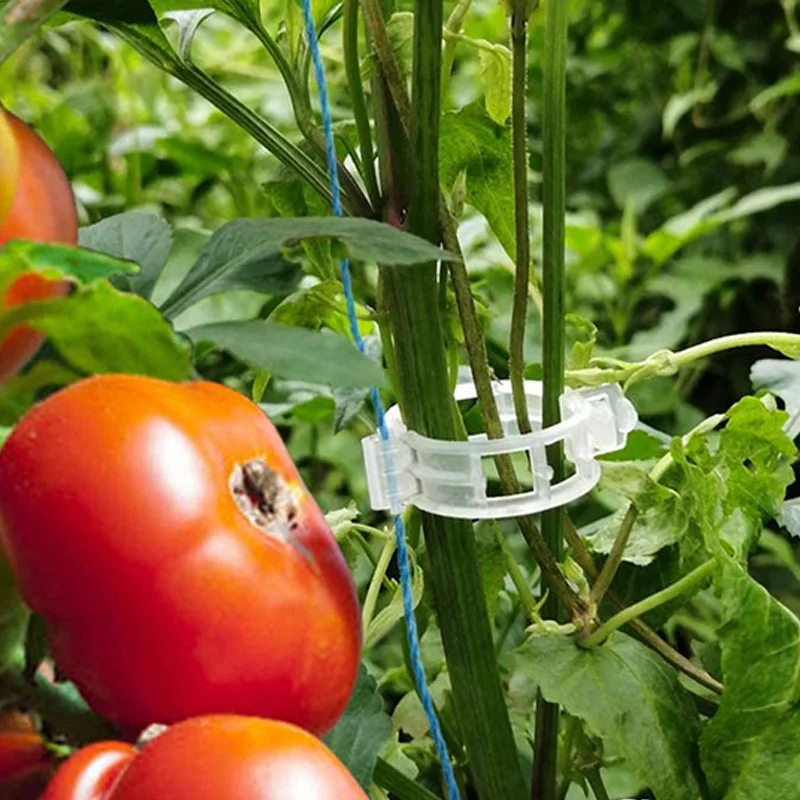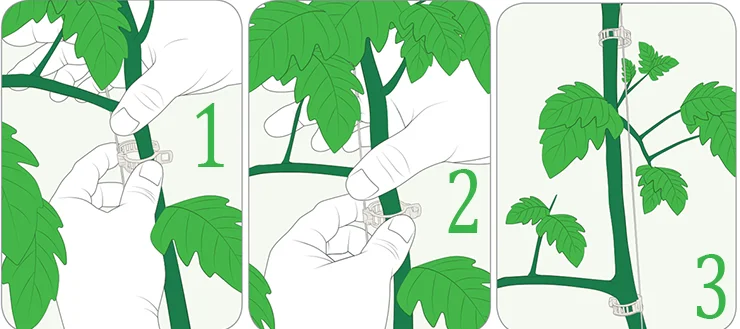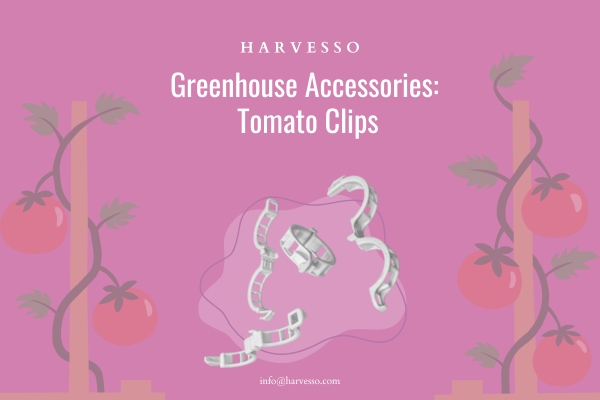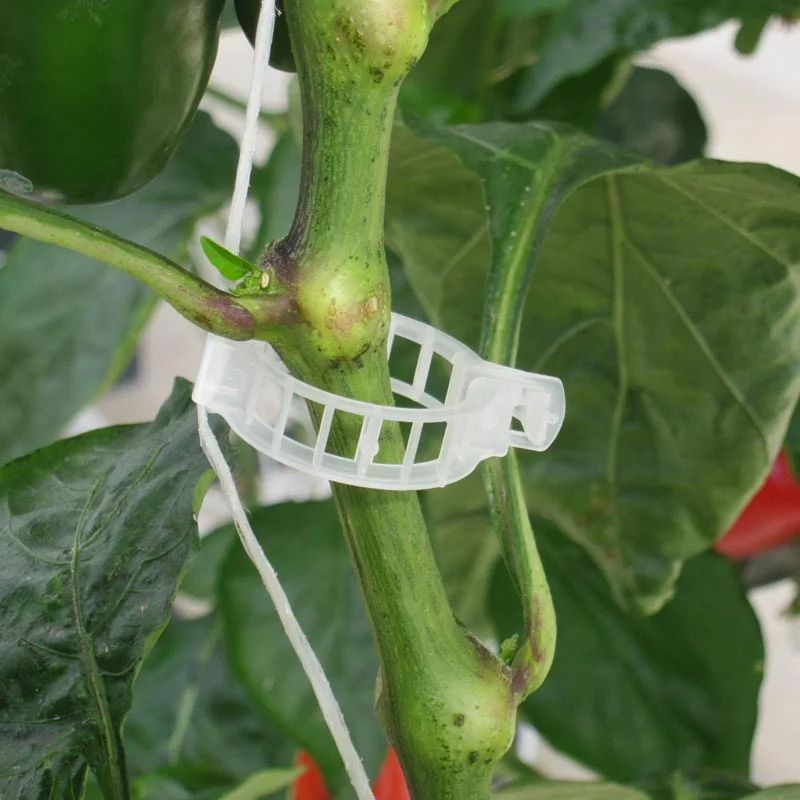Using tomato clips optimizes work routines and efficiency while securing a stronghold to plant and twine trellises, without damage. These clips are made from two materials: polypropylene homopolymer plastic and biodegradable plastic, which means less plastic waste after utilization. Body clips with different diameter sizes are available from 17 mm (0.6 inch) to 27mm (0.1 inch). In the horticulture industry, 23 mm (0.9 inch) and 25mm (0.098 inch) diameter clips are being used.
Even though this type of clip is usually called tomato clips, growers can benefit from garden clips in many plants such as cucumbers, peppers, melons, beans, flowers (especially in roses), and other vine crops.

Why do greenhouse growers need to use tomato clips?
The main advantages of tomato trellis clips are listed below:
1. Promote better air circulation and minimize disease risks. Air circulation is improved by using tomato trellis clips which have a ventilated design. With improved air circulation, the risk of fungal diseases, which are caused by less moisture and airflow, such as Botrytis fungus, is minimized.
2. One clip can be used in many plants throughout multiple growing seasons. Because of the quick-release feature of plant clips, it is easy to move and reuse them. When plants grow bigger, tomato clips can be easily taken from expanded plants and moved to new plants or stems with the least effort and harm to plant stems.
3. Trellis clips can be used throughout multiple growing seasons in a year. It does not apply to all kinds of tomato clips, but clips with UV stabilizer, which Harvesso supplies, have a longer life. UV stabilizer protects clips from the long-term damage of UV light and this feature allows to use of body clips for more than one growing season in a year.
4. Optimize time and labor when compared with other trellising methods. It is very practical to install tomato clips, because of the easy-to-close feature. With only one hand about 1500 clips can be installed in an hour and it is obvious that it saves time and labor in greenhouses.
5. Maximize greenhouse growing space. Tomato clips are perfect tools for growing vertically. They are fastened to twine trellises in greenhouses, which enable vertical growing. With growing vertically, plants cover less area while growers harvest more yields. Vertical growing makes leaves and fruits reachable for pruning and harvesting. Plants can be checked, maintained, and adjusted for pruning, pollination, and harvesting easily and rapidly thanks to the easy-to-open and non-slippery features of tomato clips.
How do greenhouse growers use tomato clips?
As stated above, it is very easy to install tomato clips, but there are some points that should be taken into consideration. First of all, clips should be placed in the right parts of plants. Tomato clips can be put in the plant stem, just below the leaf, but before the FlexTruss or arch cluster support. The place below the leaf is usually called a Y junction, so the most effective place for tomato clip installation is a Y junction. Tomato trellising clips can be used in other parts of the plant as well, depending on the situation.
To install, tomato clips are simply snapped to netting, twine trellis, or plant ladders and supports, and softly closed around the stems of the plant. An average of 10-20 clips are used per plant during long-term growth. In short-term growth, growers use 5-10 clips for each plant. To put approximately 20 cm (7.87 inch) between clips is recommended.





